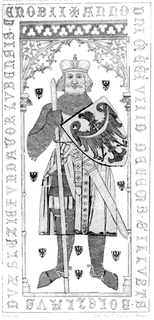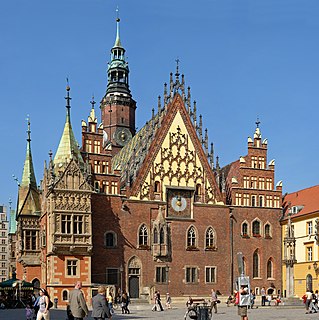The Duke of Silesia was the sons and descendants of the Polish Duke Bolesław III Wrymouth. In accordance with the last will and testament of Bolesław, upon his death his lands were divided into four or five hereditary provinces distributed among his sons, and a royal province of Kraków reserved for the eldest, who was to be High Duke of all Poland. This was known as the fragmentation of Poland. Subsequent developments lead to further splintering of the duchies.

Mieszko III the Old, of the royal Piast dynasty, was Duke of Greater Poland from 1138 and High Duke of Poland, with interruptions, from 1173 until his death.
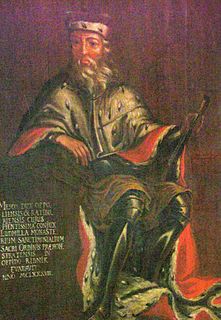
Mieszko IV Tanglefoot was Duke of Kraków and High Duke of Poland from 9 June 1210 until his death one year later. He was also Duke of Silesia from 1163 to 1173, Duke of Racibórz from 1173, and Duke of Opole from 1202.
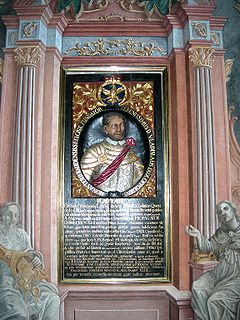
Władysław of Opole was a Duke of Kalisz during 1234–1244, Duke of Wieluń from 1234 to 1249 and Duke of Opole–Racibórz from 1246 until his death.

The Duchies of Silesia were the more than twenty divisions of the region of Silesia formed between the 12th and 14th centuries by the breakup of the Duchy of Silesia, then part of the Kingdom of Poland. In 1335, the duchies were ceded to the Kingdom of Bohemia under the Treaty of Trentschin. Thereafter until 1742, Silesia was one of the Bohemian crown lands and lay within the Holy Roman Empire. Most of Silesia was annexed by the King of Prussia under the Treaty of Berlin in 1742. Only the Duchy of Teschen, the Duchy of Troppau and the Duchy of Nysa remained under the control of the Bohemian crown and as such were known as the Duchy of Upper and Lower Silesia until 1918.

The Duchy of Bytom or Duchy of Beuthen was one of many Silesian duchies. It was established in Upper Silesia about 1281 during the division of the Duchy of Opole and Racibórz among the sons of Duke Władysław Opolski. The duchy's capital was Bytom (Beuthen), formerly part of Lesser Poland until in 1177 the Polish High Duke Casimir II the Just had attached it to the Silesian Duchy of Racibórz.
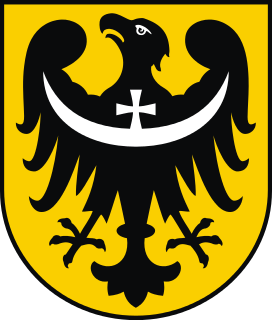
The Silesian Piasts were the elder of four lines of the Polish Piast dynasty beginning with Władysław II the Exile (1105–1159), eldest son of Duke Bolesław III of Poland. By Bolesław's testament, Władysław was granted Silesia as his hereditary province and also the Lesser Polish Seniorate Province at Kraków according to the principle of agnatic seniority.

Duchy of Racibórz was one of the duchies of Silesia. Its capital was Racibórz in Upper Silesia.
Bernard (II) of Świdnica was a Duke of Jawor-Lwówek-Świdnica-Ziębice during 1301–1312, of Świdnica-Ziębice during 1312–1322, and sole Duke of Świdnica since 1322 until his death.
Bolko I of Opole, was a Duke of Opole from 1282, Niemodlin and Strzelce Opolskie until his death.
Władysław of Bytom, was a Duke of Koźle during 1303-1334, Duke of Bytom from 1316, Duke of Toszek since 1329 and Duke of Siewierz during 1328–1337.
Bolko II of Opole, was a Duke of Opole from 1313.

Bolko III of Strzelce was a Duke of Opole during 1356–1370 and Duke of Strzelce from 1375 until his death.
Bolko IV of Opole, was a Duke of Strzelce and Niemodlin during 1382–1400, Duke of Opole from 1396.
Nicholas I of Opole was a duke of Opole since 1437, Duke of Brzeg from 1450, ruler over Kluczbork from 1451 and Duke of Strzelce, Niemodlin and Olesno from 1460.
Euphemia of Greater Poland, was a Polish princess member of the House of Piast from the Greater Poland branch and by marriage was Duchess of Kalisz, Wieluń and Opole-Racibórz.
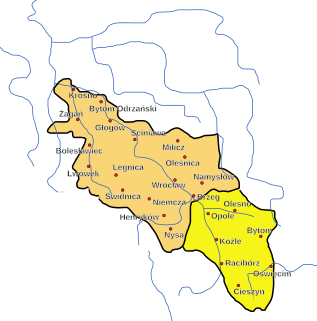
The Duchy of Opole and Racibórz was one of the numerous Duchies of Silesia ruled by the Silesian branch of the royal Polish Piast dynasty. It was formed in 1202 from the union of the Upper Silesian duchies of Opole and the Racibórz, in a rare exception to the continuing feudal fragmentation of the original Duchy of Silesia.




